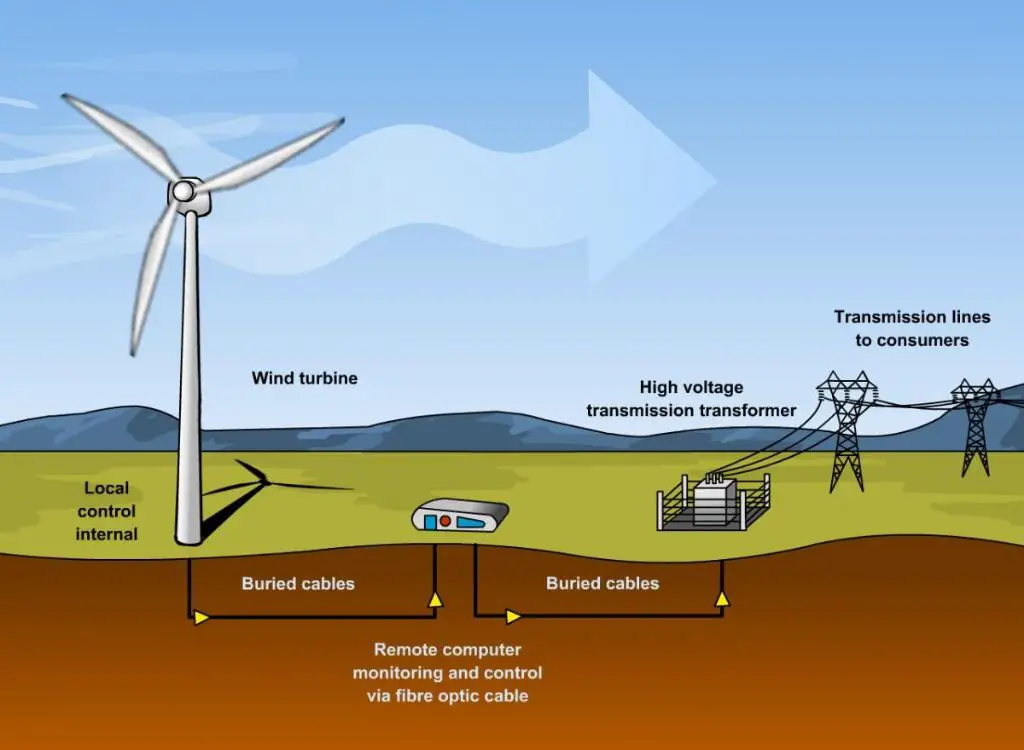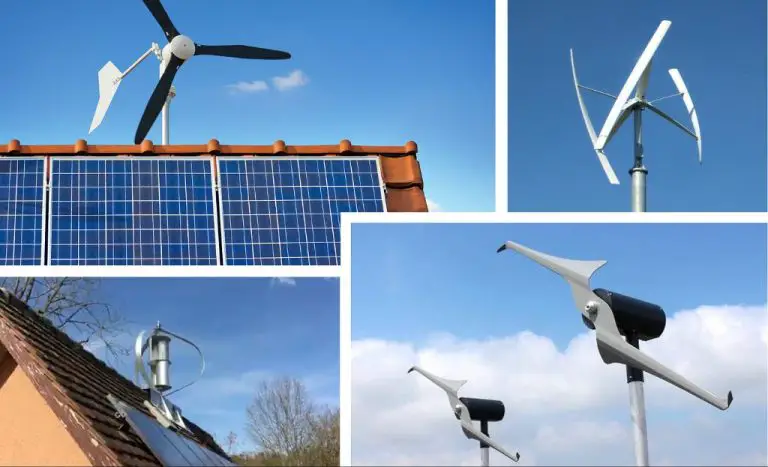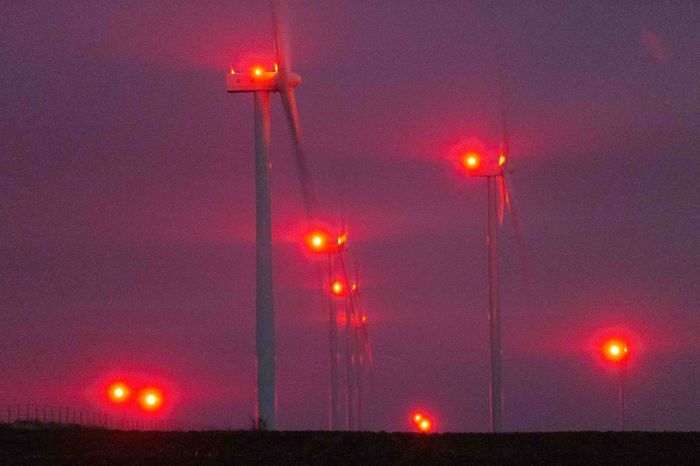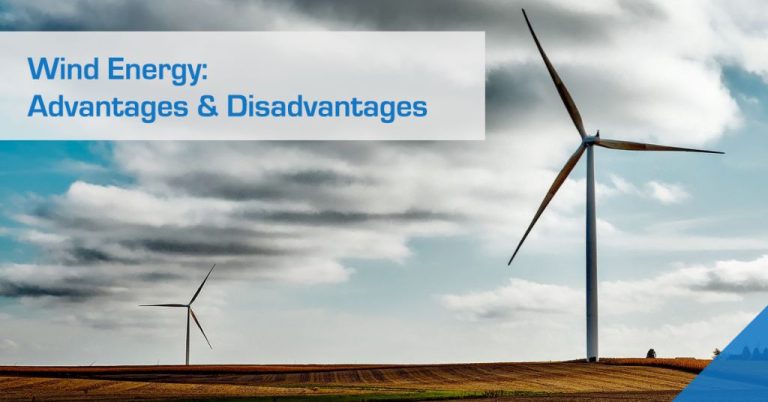What Is The Science Behind Wind Power?

Wind power refers to the process of using wind turbines to generate electricity. Wind is a form of solar energy caused by the uneven heating of the atmosphere by the sun, the irregularities of the earth’s surface, and the rotation of the earth (1). Though wind power has been harnessed for over 2000 years in applications like sailing, grinding grain, and pumping water, generating electricity is a more recent development.
The first known wind turbine used to generate electricity was built in Scotland in July 1887 by Scottish academic James Blyth. His 10 m high cloth-sailed wind turbine powered his holiday home (2). However, wind power remained a niche source of energy for many decades. Starting in the 1970s, rising oil prices and concerns about energy security led Denmark, Germany and the United States to pursue policies that jumpstarted the wind power industry. Since the early 2000s, wind power capacity has expanded rapidly due to technology improvements and policy support.
As of 2021, global wind power capacity reached 837 GW, meeting around 7% of global electricity demand. The five leading countries in total installed wind power capacity are China, the United States, Germany, India and Spain. Wind power generation continues to grow at a rapid pace, with capacity doubling roughly every three years (3). Key factors enabling this growth include policy support, technology improvements leading to lower costs, and corporates and utilities seeking renewable energy to meet sustainability goals.
(1) https://css.umich.edu/publications/factsheets/energy/wind-energy-factsheet
(2) https://www.iea.org/energy-system/renewables/wind
(3) https://cleanpower.org/facts/wind-power/
Wind Energy Basics
Wind is created by the uneven heating of the Earth’s surface by the Sun. As the Earth’s surface absorbs the Sun’s radiation, the air above it also heats up. Warm air is lighter than cool air, so the warm air rises. As this air rises, cooler air rushes in to fill the void, creating wind. The rotation of the Earth also impacts wind direction, deflecting winds to the right in the Northern hemisphere (see Coriolis effect).
The speed and direction of wind depends on several factors. The temperature contrast between two areas – such as between the equator and the poles – is a major factor. The specific features of the local terrain, such as mountains, valleys, bodies of water, also impact winds on a smaller scale. In general, wind speeds are faster over open water compared to land. Offshore wind speeds average around 20 mph, while onshore wind averages around 13 mph (source: https://physics.stackexchange.com/questions/150373/how-is-wind-created).
Wind Turbine Components
Wind turbines are complex electro-mechanical systems with many parts working together to convert kinetic energy from the wind into electrical energy. The main components of a wind turbine include:
Tower
The tower supports the rotor and nacelle above the ground. Towers are typically made of tubular steel, concrete, or steel lattice. Taller towers allow turbines to access stronger winds and generate more power. Typical tower heights range from 60-100m.
Rotor
The rotor is comprised of 2 or 3 blade assemblies mounted to a central hub. Most large turbines have 3 blades. The blades capture the wind energy and transform it into rotational motion to spin the rotor. Blade lengths are up to 90m long.
Blades
The aerodynamic blades are made of fiberglass reinforced polyester or wood-epoxy. Their curved shape helps capture the wind energy as the air flows around them. The angle of the blades can be adjusted to optimize power production.
Nacelle
The nacelle sits atop the tower and contains the gearbox, generator, transformer, and control systems. It is designed for easy access to these components for maintenance.
Gearbox
The gearbox increases the rotational speed from the low-speed rotor to the high-speed generator. This allows the generator to produce electricity at the optimal frequency.
Generator
The generator uses electromagnetic induction to convert the rotational energy into electrical energy. Common generator types are asynchronous (induction) generators and synchronous generators with permanent magnets or wound rotors.
Sources: https://www.heliciel.com/en/helice/eolienne%20hydrolienne/Composants%20eolienne.htm, https://electricalacademia.com/renewable-energy/wind-turbine-parts-functions/
How Wind Turbines Work
Wind turbines convert the kinetic energy in wind into mechanical power to generate electricity. The wind turns two or three propeller-like blades around a rotor. The rotor is connected to the main shaft, which spins a generator to create electricity (source1).
More specifically, the wind kinetic energy causes the blades to rotate. The rotating blades spin the main shaft connected to a gear box. The gear box increases the rotational speed to the level required by the generator. Finally, the generator uses magnetic fields to convert the rotational mechanical energy into electrical energy that can be dispatched and used in electrical grids (source2).
So in summary, wind turns the turbine blades, which rotate a shaft connected to a generator. The generator then converts this mechanical rotational energy into electrical energy that gets supplied to the grid (source1). The generator relies on the principles of electromagnetism to generate an electric current.
Turbine Size and Power Output
The power output of a wind turbine is directly related to the swept area of its blades. The longer the blades, the larger the swept area and the more power that can be generated. Doubling the blade length quadruples the power output [1]. This is because the energy in wind goes up by the cube of wind speed. So a small increase in blade length and swept area results in a large increase in power.
Offshore wind turbines are generally much larger than onshore ones. The largest offshore turbine today has a capacity of 12 megawatts (MW) with blades over 200m long [2]. In comparison, commercial onshore turbines are usually between 1-4 MW with blade lengths around 40-80m. The main reason is that there are fewer space constraints offshore, allowing for larger turbines and higher energy capture.
Larger turbines can generate more power but are also more expensive. So there is always a balance between turbine size and cost-effectiveness. But as technology improves, larger turbines are becoming economically viable. The average turbine size installed globally has increased from 1.65 MW in 2010 to 2.97 MW in 2020 [3].
Wind Farm Layout
One of the most important considerations in planning a wind farm is the spacing between turbines to reduce wake effects and optimize power output. Wake effects occur when the wind turbines disrupt the wind flow, creating turbulence behind the turbine that reduces wind speed. Turbines placed too closely together experience greater wake effects from adjacent turbines, reducing their energy production. Most experts recommend a spacing of 3-10 rotor diameters between turbines to minimize wake effects (source, source). The optimal spacing depends on factors like wind direction, terrain, and turbine size.
There are also differences in wind farm layouts for onshore vs. offshore installations. Onshore wind farms are more constrained by land area and terrain, so the turbines are usually arranged in rows and columns to maximize spacing and density. Offshore wind farms have fewer space restrictions and can use more flexible arrangements like diagonal grids to optimize spacing and wind direction (source). Offshore layouts must also consider water depth, seabed conditions, and shore connections when designing array configurations.
Transmission and Integration
Connecting wind farms to the electrical grid requires building many miles of transmission lines and associated infrastructure like substations. Most large-scale wind farms are located far from population centers, so new transmission lines must be constructed to transport the electricity [1].
Integrating the variable and intermittent nature of wind power into the electrical grid presents challenges. Advanced forecasting of wind speed and power production allows grid operators to schedule the appropriate amount of reserve power ahead of time. Accurate forecasting reduces the integration costs and improves reliability [2].
[1] https://www.energy.gov/eere/wind/glossary-wind-energy-terms#transmission
[2] https://www.nrel.gov/docs/fy04osti/34676.pdf
Wind Power Economics
The costs of wind power have decreased dramatically in the past decade. According to the International Renewable Energy Agency, the global weighted average levelized cost of electricity (LCOE) from onshore wind declined by 15% between 2010 and 2021, making it one of the most cost-competitive sources of new electricity generation.1
The capital costs of wind turbines account for most of the overall costs. But improvements in turbine technology, scale, and performance have helped drive down capital costs. Operating costs are relatively low, as wind turbines require minimal maintenance once installed.2
In terms of LCOE, onshore wind is now cheaper than any fossil fuel option, without financial support. The global average LCOE for onshore wind declined to $0.04/kWh in 2021. This compares to $0.048/kWh for coal, $0.061/kWh for gas, and $0.132/kWh for nuclear.1
Various government incentives have helped accelerate wind power deployment. Tax credits, feed-in tariffs, renewable portfolio standards and tenders have made wind energy more financially attractive. In the US, the production tax credit has been instrumental in enabling the wind industry’s growth.3 Cost reductions now allow wind to compete without subsidies in many markets.
Environmental Impact
Wind power has both positive and negative environmental effects compared to other forms of electricity generation.
Visual impacts and noise are commonly cited concerns with wind turbines. The tall towers and spinning blades can be considered an eyesore on the landscape by some people (Environmental impact of wind power,” n.d.). Wind turbines also generate noise as the blades rotate through the air, which can be annoying to people living nearby (“Pros and cons of wind energy,” n.d.).
Wind turbines can also pose a hazard to birds and bats that may fly into the rotating blades. Careful wind farm siting and updated turbine designs can help minimize impacts to wildlife populations (Environmental impact of wind power,” n.d.).
However, wind energy offers major advantages over fossil fuel power plants in terms of air pollution and greenhouse gas emissions. Wind turbines produce no air emissions during operation, unlike coal and natural gas plants which emit pollutants that reduce air quality and contribute to acid rain and climate change (“Pros and cons of wind energy,” n.d.). The overall carbon footprint of wind power is quite small, making it one of the most climate-friendly energy sources available today (Environmental impact of wind power,” n.d.).
Future of Wind Power
The future looks bright for wind power. As technology improves, wind turbines are becoming more efficient and cost-effective. Many experts predict that wind will continue to rapidly expand its share of electricity generation across the globe.
One major area of growth will be offshore wind farms. Installing turbines offshore provides access to stronger and more consistent winds compared to onshore locations. Floating offshore platforms are also being developed, allowing wind farms to be placed further from shore in deeper waters with higher wind potential. The U.S. and Europe have vast offshore wind resources yet to be tapped.
New markets for wind power are also emerging. Improvements in turbine technology now allow wind farms to be viable in areas with lower wind speeds. More regions are investing in their first wind farms, including parts of Africa, Asia, and South America. There is also growing interest in small wind turbines for distributed energy generation.
On the technology front, turbines are continually getting bigger, more efficient, and able to generate more electricity. New materials, blade designs, and taller towers continue to drive performance improvements. Automation and AI can help further optimize wind farm operations. With sustained innovation, wind power is poised to become one of the dominant sources of global electricity production.




